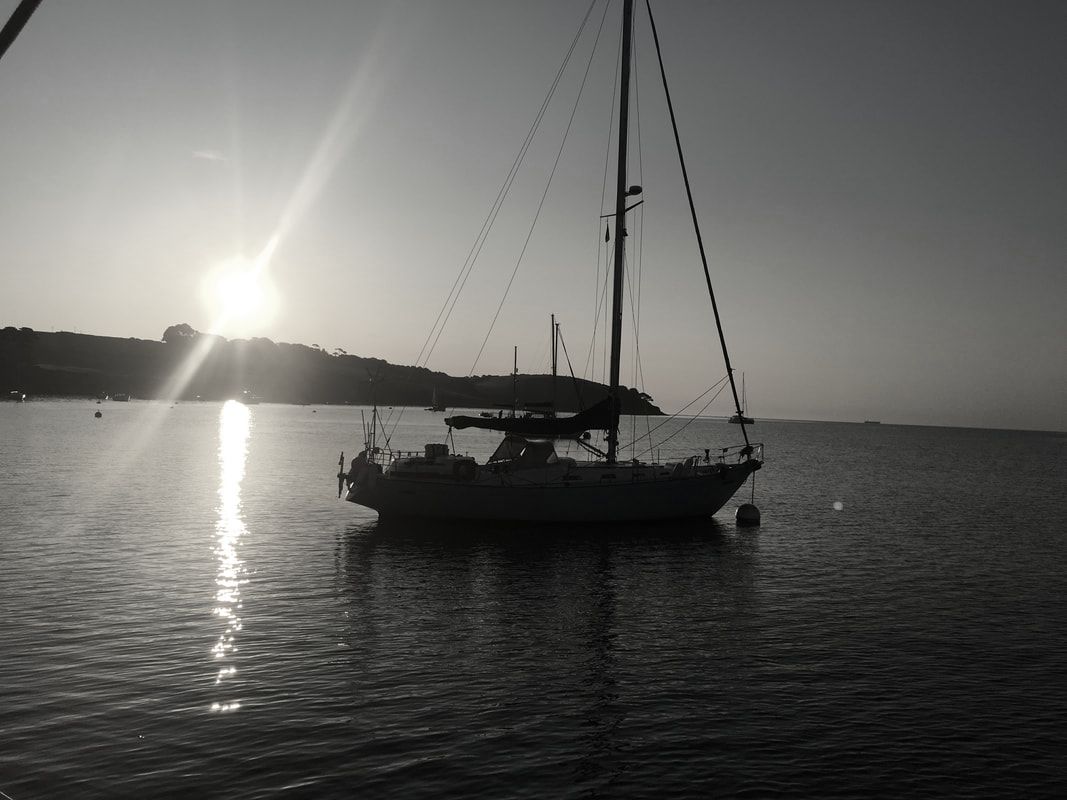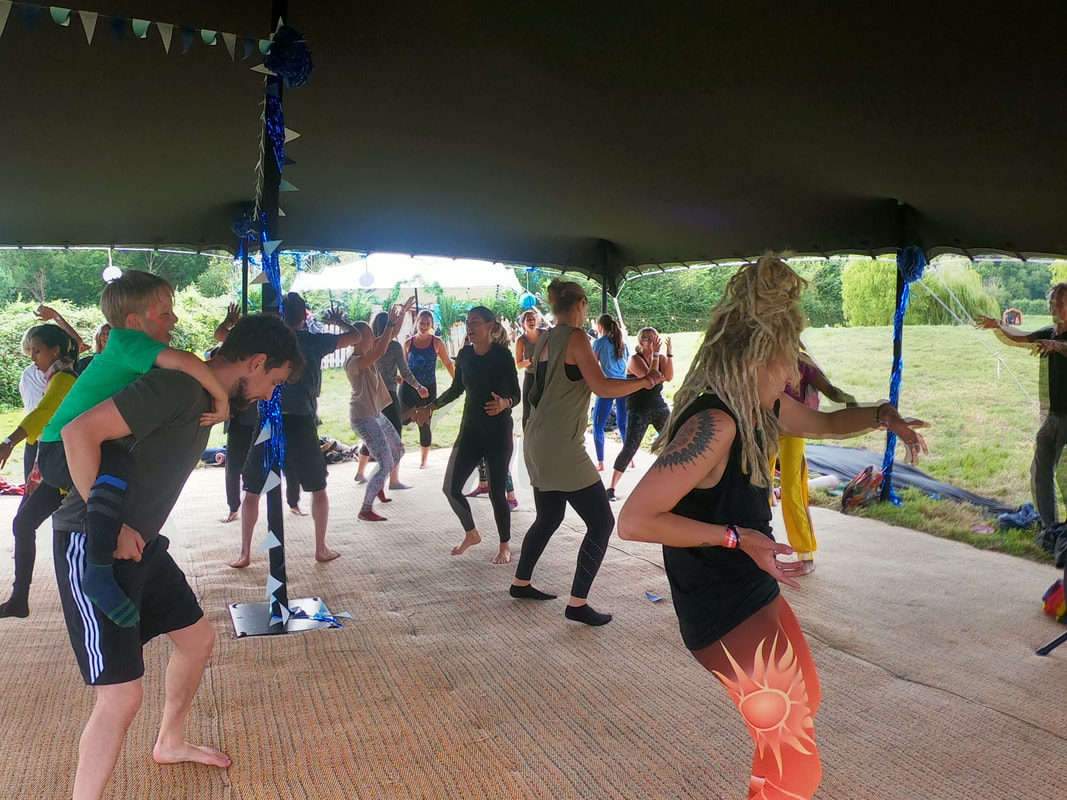|
It is no wonder that circumnavigating solo sailors, at sea for months all alone, often find such clarity in the deep undisturbed quietness that they experience. Yes they may be fighting howling gales and the threat of death at any moment, but the quietness is always there when they start to become totally attuned to their ship and environment. At the moment I am reading The Long Way by Bernard Moitessier. Rarely will you read such simple, insightful words about the true 'self' that he discovers in the days, weeks and months alone, where he loses himself entirely to the ocean and the boat.
I suppose for many of us The Long Way is an appropriate title for our own journey in life; we spend an awful lot of time going nowhere, and like the circumnavigating sailor, returning to exactly where we began. When you spend a lot of time just sitting quietly, walking quietly or doing anything quietly, that is to say, with total awareness, you start to notice a few things that are so obvious you cant understand how you ever missed them before. Like the solo circumnavigator, you start to 'lose yourself' entirely. What does this losing oneself mean? We throw the phrase around, and we get a sense o what we mean but it is very hard to define. I would say that it is when the illusion of the 'self' that you imagine yourself to be, falls away to leave the only real thing that you actually are, that thing that we are all so desperately searching for; the search that caused us to take up yoga or tai chi, to travel the world, to sit and meditate, to visit ashrams or buy statues of buddha. The search. Most of us imagine that the end of this search lies in dedicated and continued practice, such as prolonged meditation or yoga. Indeed we may have brief glimpses of 'clarity', although we cant define what that was we are sure that it has something to do with the thing we are hunting so desperately. If we are not careful this can spiral into an entirely new search to regain that magical sensation, a new distraction. Ee imagine that maybe if we accumulate enough meditation or yoga the clarity will stay, and yet the idea of practising meditation or yoga is a fallacy itself, another trap, it suggests an action or a thing that 'we' must try to do and instantly we fall straight back into the trap of the illusory self trying to solve the problem of the illusory self. Its like a shadow chasing itself to find its true source – it isn't possible. But simply sit quietly, with no effort to do anything, no attempt to still the mind or restrict the thoughts, simply let go of everything, completely, even 'yourself'. Just be there with the thoughts with the pains in the body, with the boredom, the constant calls to urgently do something, anything else and ask which of these passing things is 'me'? Which if them is the 'I' that I believe I am? Let go for long enough and you will realise that you can't find an objective source to pin this sense of 'I' upon. It transpires that 'I' is there when the thoughts come and still there when the thoughts pass away into moments of mental emptiness. The I endures when your left knee is in agony and equally when you forget all about the pain and your knee ceases to exist in awareness. I is aware of the bird singing outside, the breath slipping in and out and the silence when all sounds evaporate. As all of these things come and go, thoughts, pains, sounds and everything else within your consciousness, the only constant through all of them is that they are known. 'I' does not think, there is simply an equal knowing of thought and knowing the absence of thought. 'I' is not in pain, it knows pain and it knows it's absence. I knows sound and I knows silence equally. I is absolutely everything, the apparent 'existence' of everything and the apparent 'absence' of everything. It doesn't need thought or no though; sound or silence; body or no body. It is always, entirely, completely, whatever is. How more simple could it be? The thing you were looking for, the 'you' that seemed to be missing, was already there, all of the time, it simply can't not be there. We will be spending three days just letting go on 'Beyond Mind' in May. With so many people feeling drawn to practice and teach in a fashion that is more intuitive, somatic and less mechanical than what we perceive as 'traditional asana' it is important to explore how this might come about. I'd say that we are by now pretty experienced in working with a foot in both camps. We have students on Teacher training who are thrown by the more self guided practices and others who feel averse to the more linear mat based asana. However they really do complement each other and there is no need to discard one or the other. As I d every year, Im currently updating and rewriting sections of the Yoga Like Water TT manual. I thought Id post the introductory passages on this balancing act in case any one wants to chew it over. AS ever Im not suggesting Im correct, its just an opinion.
Finding Freedom in Movement: We have already discussed that most people will benefit greatly by spending some extended time exploring their bodies from the relative safety and well defined structure of ‘formal asana’ that is to say, postures that they associate with yoga - standing balances, warriors and so on. The relative lack of movement and the connection to breath that these offer is a great opportunity for drawing practitioners focus and attention into the body. Once within this quiet space they can, with the help of intelligent questioning from the guide, start to listen and then understand a little about what their body is telling them - a voice that they have probably long disconnected from. This re acquainting themselves with the body, its patterns and oddities, its traumas and imbalances is a step that cannot be skipped over. It doesn't have to be done within the framework of asana, indeed any unhurried, introverted practice will work equally well, such as Qi Gong or Tai chi. But it simply cannot be done in a hurry, a vinyasa flow will not do. Many of us will of course want to work in a more intuitive and organic ways too, outside of what can feel like a very rigid, mechanical and linear asana format. That may be one fo the reasons why you are here. The problem comes if we introduce these somatic type practices too suddenly without any structure or background in listening at all. The students are likely to become confused as to the purpose, unable to ‘feel’ their bodies at this stage, disconnected from the practice and will become quite likely disheartened by the fact that they don’t know what they are supposed to ‘do’. Even long term students of yoga asana can become so comfortable in the relative safety of the postures they are familiar with, that they will be reluctant to step outside of them and start moving in a completely free and intuitive way. By using a mixture of gradually introduced games, partnerwork and solo practices we can start to get people trusting themselves in a gentle and natural way. They will end up moving much more naturally and freely without even realising it when you introduce a ‘game’ scenario where they are all laughing and relaxed. Take away the emphasis of any gain or progression in such practices, just allow the play to happen and unfold naturally. |
AuthorDan Peppiatt. Archives
June 2024
Categories |


 RSS Feed
RSS Feed